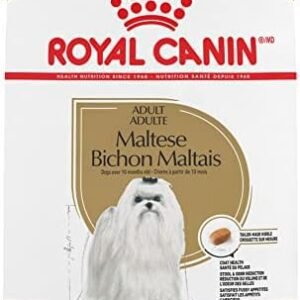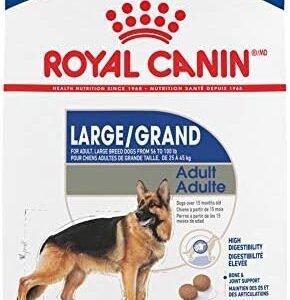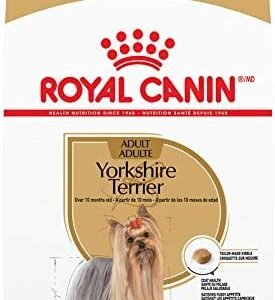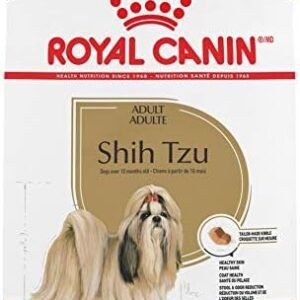Introduction
Imagine this scenario: You’re enjoying a snack, and suddenly your four-legged friend, your loyal canine companion, looks up at you with those pleading eyes, hoping for a bite of what you’re eating. One of the most popular snacks for humans on the go is the iconic Slim Jim. These spicy, flavorful meat sticks have a devoted fan base, but can your furry friend partake in this treat? In this article, we delve into the world of canine cuisine to answer the question: Can dogs eat Slim Jims? We’ll explore the pros and cons of sharing these snacks with your pet, discuss appropriate portion sizes, and provide guidance on what to do if your dog gets their paws on a Slim Jim. Let’s ensure your pup stays safe, happy, and well-fed.

Table of Contents
Can dogs eat Slim Jims?
Many pet owners have experienced it – you’re enjoying a tasty snack, and your furry friend looks up at you with those big, longing eyes. It’s only natural to wonder if your dog can enjoy a delicious treat like Slim Jims too. In this section, we’ll address the safety and appropriateness of feeding Slim Jims to your dog, taking a closer look at whether these spicy, savory meat sticks are a suitable addition to your pet’s diet.
Slim Jims, with their spicy kick and meaty flavor, are a popular snack among humans. However, their nutritional content may not align with your dog’s dietary needs.
Nutrition Facts of Slim Jims
To determine whether Slim Jims are a safe and healthy option for your dog, let’s examine their nutritional content. Below is a table outlining the key nutritional facts of Slim Jims:

| Nutrient | Amount per 1 Slim Jim (approximately 14g) |
|---|---|
| Calories | 53 |
| Protein | 2g |
| Fat | 5g |
| Sodium | 350mg |
| Carbohydrates | 0g |
| Sugars | 0g |
Nutritional Benefits
Slim Jims do offer a few positive aspects when it comes to their nutritional profile. They provide a moderate amount of protein, which is an essential component of a dog’s diet. Protein is crucial for muscle development, overall growth, and various physiological functions. The moderate protein content in Slim Jims may be enticing to dogs, as they are naturally inclined to a carnivorous diet.
However, Slim Jims are primarily known for their high fat and sodium content, which may not align with your dog’s dietary needs.
Drawbacks of Feeding Slim Jims to Dogs
High Sodium Content: Slim Jims are notorious for their high sodium levels. A single Slim Jim contains about 350mg of sodium, and excessive sodium intake can lead to health problems in dogs. Too much sodium can cause increased thirst, leading to excessive water consumption and urination. In severe cases, it may result in sodium ion poisoning, causing symptoms like vomiting, diarrhea, high body temperature, seizures, and even death.
High Fat Content: Slim Jims are also relatively high in fat, with about 5g per stick. Dogs require some fat in their diet, but too much can lead to obesity, pancreatitis, and other health issues. Feeding your dog high-fat treats regularly, such as Slim Jims, can contribute to weight gain and related problems.
Artificial Additives: Slim Jims often contain artificial additives, preservatives, and flavorings that may not be ideal for your dog. Some dogs can be sensitive to these additives, which might result in digestive upset or allergic reactions.
- Lack of Essential Nutrients: While Slim Jims provide protein, they lack the essential vitamins and minerals that should be a part of your dog’s diet. Feeding your dog Slim Jims as a primary snack may deprive them of the nutrients they need for overall health.
Moderation is Key
In moderation, you can occasionally offer a small piece of Slim Jim to your dog as a treat. However, it’s essential to ensure that this is only an infrequent indulgence. Keep in mind that every dog is different, and their tolerance for high-sodium and high-fat foods can vary. It’s crucial to monitor your dog’s reaction to Slim Jims and avoid any negative consequences.
Slim Jims Should Complement, Not Replace, Your Dog’s Primary Diet
Remember that Slim Jims are not a balanced or nutritious diet for your dog. These snacks should complement, not replace, your dog’s regular meals. If you’re considering adding some variety to your dog’s diet, explore safer, healthier options that provide the necessary nutrients without the drawbacks of high sodium and fat content.
Now that we’ve explored the nutritional aspects of Slim Jims for dogs let’s delve deeper into how much your dog can eat, potential risks, and how to make these treats more enjoyable and safer for your furry friend.
How much Slim Jims can a dog eat?
When it comes to treating your dog with Slim Jims, the key is moderation. Slim Jims are high in sodium, fat, and artificial additives, which can be detrimental to your dog’s health when consumed in excess. In this section, we’ll discuss the importance of moderation, appropriate serving sizes, and considerations based on your dog’s size and breed.
Moderation is Key
The first and most critical point to understand is that treats like Slim Jims should not make up more than a small portion of your dog’s daily calorie intake. While dogs can enjoy occasional treats, these snacks should not become a significant part of their diet. High-fat, high-sodium foods like Slim Jims are best given sparingly.
Start Small and Observe
Before indulging your dog with Slim Jims, start with a small piece and observe how your dog reacts. Some dogs may have no issues digesting small amounts ofthese snacks, while others might experience gastrointestinal distress or allergic reactions. If you notice any adverse effects, discontinue feeding Slim Jims immediately.
Preparing Slim Jims for Your Dog
To prepare Slim Jims for your dog, there are a few steps to follow:
Cut into Small Pieces: Slice the Slim Jim into small, manageable pieces. Smaller portions are easier for your dog to eat and digest.
Remove the Casing: The casing of Slim Jims can be tough and challenging for your dog to chew and swallow. Remove it to avoid any choking hazards.
Cut into Bite-sized Pieces: Further divide the Slim Jim pieces into bite-sized portions. This not only makes it easier for your dog to consume but also ensures that the treat lasts a bit longer.
Size and Breed Matter
The size and breed of your dog play a role in determining how much Slim Jim is safe for them to consume. Large dogs typically have a higher tolerance for certain foods and can handle more substantial treats. Smaller dogs, however, are more sensitive to high-sodium and high-fat content. Be aware that some breeds may also have specific dietary sensitivities.
Appropriate Serving Sizes
The appropriate serving sizes of Slim Jims for your dog should be based on their weight. Below is a general guideline to help you determine suitable portions:
Small Dogs (up to 20 pounds): Limit Slim Jims to a maximum of 1-2 small pieces per serving, and no more than once a week.
Medium Dogs (20-50 pounds): You can offer up to 3 small pieces of Slim Jims as an occasional treat, but not more than once a week.
Large Dogs (50+ pounds): Larger dogs can tolerate slightly more, so you can offer up to 4 small pieces of Slim Jims occasionally, but again, not more than once a week.
Keep in mind that these are just general guidelines. The specific needs and sensitivities of your dog should be your primary consideration. Always consult your veterinarian if you have any concerns or questions about what’s appropriate for your dog.
It’s essential to monitor your dog’s health and behavior when introducing any new treat, including Slim Jims. Every dog is unique, and what works for one may not work for another.
In the next section, we’ll address the potential risks associated with feeding Slim Jims to dogs. Understanding these risks will help you make more informed decisions about whether to include these spicy treats in your dog’s diet.
What Are the Risks of Feeding Slim Jims to Dogs?
Feeding your dog Slim Jims can pose several risks, and it’s essential to be aware of these potential dangers. In this section, we’ll delve into the specific risks associated with these spicy snacks. We’ll address the possibility of food allergies, the signs of food intolerance, and potential hazards related to certain components of Slim Jims, while also listing the signs and symptoms of adverse reactions in dogs.
Food Allergies and Sensitivities
Just like humans, dogs can have allergies or sensitivities to certain foods. In the case of Slim Jims, there is a risk of triggering food allergies or intolerances in your dog. The specific ingredients and spices used in Slim Jims can be problematic for some dogs. If you suspect that your dog has food allergies or sensitivities, it’s best to avoid giving them these snacks.
Signs of Food Intolerance
Food intolerance can manifest as various short-term signs in dogs. If your dog is intolerant of the ingredients in Slim Jims, you may observe the following symptoms:
Upset Stomach: Your dog might experience nausea, vomiting, diarrhea, or excessive gas after consuming Slim Jims.
Abdominal Discomfort: Restlessness, abdominal pain, and discomfort can be clear signs that your dog is not handling the treat well.
Lethargy: Unusual tiredness or lethargy after eating Slim Jims can indicate an adverse reaction.
- Allergic Reactions: In some cases, dogs may develop allergic reactions, including itching, hives, swelling, or even difficulty breathing.
Hazards Related to Specific Components
Slim Jims are a processed meat snack known for their high sodium and fat content. These ingredients can pose several hazards to dogs:
Sodium Overload: High sodium intake can lead to sodium ion poisoning in dogs, causing excessive thirst, urination, and potentially leading to more severe conditions like hypernatremia. The salt content in Slim Jims is much higher than what dogs should consume regularly.
High Fat Content: The high fat content in these snacks can lead to pancreatitis, a painful and potentially life-threatening condition for dogs. It can cause symptoms like vomiting, diarrhea, and severe abdominal pain.
Artificial Additives: Slim Jims contain artificial additives and preservatives, which can be harsh on your dog’s digestive system and might lead to various adverse reactions.
Allergic Reactions
Dogs can experience allergic reactions to certain components of Slim Jims. Allergic reactions can vary in severity and may include:
Itching and Scratching: Mild reactions can manifest as itching or scratching.
Hives: Raised, itchy bumps (hives) may appear on the skin.
Swelling: Swelling of the face, eyes, or body can occur in more severe cases.
- Difficulty Breathing: In rare and severe allergic reactions, dogs may have difficulty breathing, which is a medical emergency requiring immediate attention.
Specific Issues Caused by Consuming Slim Jims
Consuming Slim Jims can lead to various specific issues in dogs:
Obesity: The high-fat content in Slim Jims can contribute to weight gain and obesity in dogs if consumed regularly.
Gastrointestinal Distress: The spices and artificial additives in Slim Jims can lead to gastrointestinal distress, resulting in diarrhea, vomiting, and stomach upset.
Pancreatitis: The high-fat content in these snacks can trigger pancreatitis, a painful and potentially life-threatening condition in dogs.
- Dehydration: Excessive salt intake can lead to dehydration, which, if severe, can be harmful to your dog’s overall health.
Signs and Symptoms of Adverse Reactions
Be vigilant and watch for signs of adverse reactions when you introduce your dog to Slim Jims. Signs and symptoms of adverse reactions may include:
Vomiting: If your dog vomits after consuming Slim Jims, it’s a clear sign of digestive distress.
Diarrhea: Loose or watery stools can indicate gastrointestinal issues.
Lethargy: Unusual tiredness or a lack of energy can be a sign of discomfort.
Swelling: Swelling of the face, body, or eyes is indicative of an allergic reaction.
Excessive Thirst and Urination: This may suggest sodium ion poisoning.
If your dog experiences any of these symptoms or signs, it’s crucial to consult your veterinarian immediately. Adverse reactions to Slim Jims or any other human food should not be taken lightly. Your veterinarian can provide guidance and treatment to ensure your dog’s health and safety.
In the next section, we’ll explore the frequently asked questions about dogs consuming Slim Jims, providing answers to common queries to further guide you in making informed decisions regarding your pet’s diet.
How to Feed Slim Jims to Your Dog and Make It Enjoyable
While we’ve discussed the risks and potential adverse effects of feeding Slim Jims to dogs, it’s essential to explore safe and enjoyable ways to incorporate them into your dog’s diet if you choose to do so. In this section, we’ll provide guidelines on how to feed Slim Jims to your dog and make it a positive experience.
1. In Moderation is Key
The first and most crucial aspect of feeding Slim Jims to your dog is moderation. It’s vital to understand that Slim Jims should be an occasional treat rather than a regular part of your dog’s diet. Excessive consumption can lead to various health issues, as we’ve discussed earlier.
2. Slice Them Thin
To make Slim Jims more dog-friendly, slice them into thin pieces. Thin slices are easier to manage for your dog, reducing the risk of choking or digestive issues. You can use a sharp knife to cut them into small, bite-sized portions.
3. Use as a Training Treat
If you’re using Slim Jims as a training treat, consider cutting them into even smaller pieces. Dogs respond well to positive reinforcement during training, and these flavorful treats can be an effective motivator.
4. Food Topper or Mixer
Slim Jims can be used as a food topper or mixer. If you feed your dog dry kibble, adding a small amount of chopped Slim Jims can enhance the flavor of their regular meal. It’s important to keep the proportion of Slim Jims minimal, so it doesn’t overshadow the nutritional value of your dog’s main diet.
5. Homemade Treats
You can get creative in the kitchen and make homemade dog treats with Slim Jims. Here’s a simple recipe:
Homemade Slim Jim Dog Treats:
Ingredients:
- 1 cup whole wheat flour
- 1/4 cup water
- 1/4 cup unsalted beef or chicken broth
- 2 tablespoons of finely chopped Slim Jims
- 1 egg
Instructions:
Preheat your oven to 350°F (175°C).
In a mixing bowl, combine whole wheat flour, water, broth, chopped Slim Jims, and an egg.
Knead the dough until it’s well mixed. You can add a bit more water or flour if needed to achieve the right consistency.
Roll out the dough on a floured surface to your desired thickness. You can use cookie cutters or simply cut the dough into small pieces.
Place the treats on a baking sheet and bake for 25-30 minutes or until they’re golden brown.
Let the treats cool before giving them to your dog.
Remember, these homemade treats should also be given in moderation and should not replace your dog’s regular, well-balanced diet.
6. Monitor Your Dog
Always monitor your dog’s reaction to Slim Jims or any treat. While some dogs may tolerate them well, others may experience digestive discomfort or adverse reactions. If you notice any signs of distress, such as vomiting, diarrhea, or unusual behavior, discontinue the treats and consult your veterinarian.
7. Fresh Water
When giving Slim Jims or any treats, ensure that your dog has access to fresh water. This helps in digestion and prevents dehydration.
By following these guidelines, you can safely introduce Slim Jims as an occasional treat for your dog, making mealtime more exciting and enjoyable for your furry friend. However, always prioritize their health and well-being, and consult your veterinarian if you have any concerns about their diet or any adverse reactions.
In the next section, we’ll address some frequently asked questions about dogs eating Slim Jims, providing answers to common queries and offering further insights to ensure your dog’s diet remains safe and enjoyable.
10 FAQs About Dogs Eating Slim Jims
As we’ve explored the topic of dogs eating Slim Jims, you might have some lingering questions. This section addresses the most frequently asked questions to provide you with a comprehensive understanding of the subject.
1. Can I Give My Dog Slim Jims as a Treat?
While Slim Jims can be given as an occasional treat, it’s essential to do so in moderation. These snacks are high in salt, preservatives, and additives, which may not be the healthiest choice for your dog. If you choose to offer them as a treat, make sure it’s a rare indulgence and only in small quantities.
2. Are Slim Jims Toxic to Dogs?
Slim Jims are not inherently toxic to dogs. However, the high salt content can lead to sodium ion poisoning, especially if your dog consumes a significant amount. This can be dangerous and lead to various health issues. To avoid such risks, keep Slim Jims out of your dog’sreach and only offer them in small portions.
3. What Are the Risks of Feeding Slim Jims to Dogs?
Feeding Slim Jims to dogs comes with several risks, including excessive salt intake, gastrointestinal distress, and obesity. High salt levels can lead to sodium ion poisoning, which can be life-threatening. Digestive problems such as vomiting and diarrhea can also occur due to the high-fat content in Slim Jims.
4. Can Dogs Eat Slim Jims Safely If They’re Low-Sodium?
Low-sodium Slim Jims are available, but even these should be given to dogs with caution. While they may reduce the risk of sodium ion poisoning, they still contain high levels of unhealthy fats and artificial additives. Always consult your veterinarian before introducing any new treats into your dog’s diet.
5. My Dog Stole and Ate a Whole Slim Jim. What Should I Do?
If your dog accidentally consumes a whole Slim Jim or a significant portion, monitor them closely. Watch for symptoms like excessive thirst, vomiting, diarrhea, and lethargy. Contact your veterinarian immediately if you notice any concerning signs.
6. Can Dogs Develop Allergies to Slim Jims?
Yes, dogs can develop allergies to certain ingredients in Slim Jims. These allergies may manifest as skin irritations, digestive issues, or other adverse reactions. If you suspect your dog has developed an allergy to Slim Jims or any other food, consult your veterinarian for guidance.
7. What Are Some Signs of Allergic Reactions to Slim Jims?
Signs of allergic reactions in dogs may include itching, redness, swelling, hives, digestive problems (vomiting or diarrhea), excessive licking, or behavioral changes. If you notice any of these signs after giving your dog Slim Jims, discontinue the treats and consult your veterinarian.
8. Can I Use Slim Jims for Training My Dog?
Slim Jims can be used as training treats if cut into small, bite-sized pieces. However, there are healthier options available, such as commercial dog training treats or homemade treats. Ensure that the Slim Jim treats are minimal and do not replace your dog’s regular diet.
9. What Are Some Healthier Alternatives to Slim Jims?
Healthier treat options for dogs include fresh fruits and vegetables like apples, carrots, and green beans. Commercial dog treats specifically designed for training are also a great choice. These options are lower in salt and additives and provide essential nutrients.
10. Can Dogs Eat Any Type of Slim Jims?
All varieties of Slim Jims should be treated with caution when it comes to feeding dogs. Whether they’re original, mild, or low-sodium, the salt and fat content in these snacks can be problematic for your dog’s health. It’s best to avoid them altogether or consult your veterinarian for guidance on whether they are safe for your specific dog.
In conclusion, while Slim Jims are not toxic to dogs, they are not the healthiest treat choice. Feeding your dog these snacks should be done sparingly and in small quantities. Always prioritize your dog’s well-being and consult your veterinarian for advice on suitable treats and a well-balanced diet for your furry friend. In the final section, we’ll wrap up our discussion on dogs and Slim Jims, providing some additional tips and a closing thought.
Conclusion
In conclusion, we’ve explored the intriguing topic of dogs and Slim Jims. While these popular meat snacks are not inherently toxic to dogs, they come with risks that dog owners should be aware of. Slim Jims are laden with salt, preservatives, and artificial additives, making them an unhealthy choice for our canine companions. The high salt content, in particular, poses a significant risk of sodium ion poisoning.
The key takeaway is that Slim Jims should be reserved as an occasional treat, and even then, only in small quantities. They should never replace your dog’s regular diet, as they lack the essential nutrients required for their well-being.
So, as you consider giving your dog a treat, why not explore healthier alternatives? Fresh fruits and vegetables like apples, carrots, and green beans make excellent options. Additionally, commercial dog treats specifically designed for training can be a valuable addition to your dog’s snack menu. These alternatives offer similar benefits without the health risks associated with Slim Jims.
We hope this article has shed light on the topic of dogs and Slim Jims and helped you make informed decisions about your dog’s diet. If you have any questions or would like to share your experiences with alternative treats, please feel free to reach out to us in the comments section below. Your feedback and insights are valuable in our shared journey to ensure the health and happiness of our beloved four-legged friends.
























